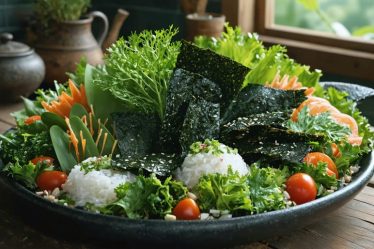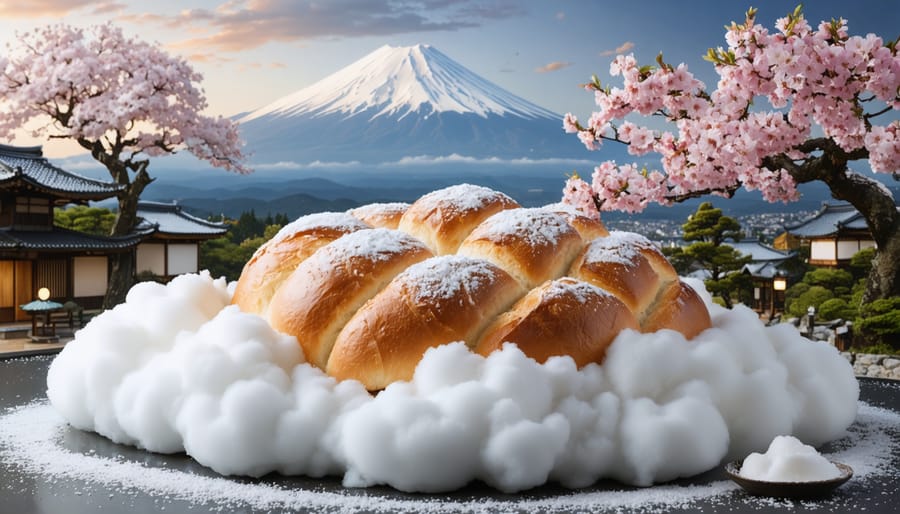
Transform your homemade bread into cloud-like perfection using the tangzhong method, a cornerstone of Japanese culinary traditions that’s revolutionizing home baking worldwide. This ingenious technique – cooking a portion of flour with water until it forms a thick, glossy paste – creates bread with an impossibly soft, fluffy texture that stays fresh for days. Unlike traditional Western bread-making, Japanese bread methods focus on achieving that coveted pillowy texture through precise temperature control and careful moisture manipulation. Whether you’re crafting milk bread (shokupan), curry buns, or classic dinner rolls, mastering this technique will elevate your baking from good to extraordinary. The science is simple but transformative: pre-gelatinizing the starches allows the dough to hold more moisture, resulting in bread that’s both ethereally light and remarkably stable.
The Magic of Tangzhong: Japan’s Gift to Bread Making
What Makes Tangzhong Special
The magic of tangzhong lies in a simple but brilliant cooking technique that transforms ordinary flour and water into something extraordinary. When you cook these ingredients together, the flour’s starches undergo a process called gelatinization, creating a thick, pudding-like paste that works wonders in your bread dough.
I remember the first time I tried this method – I was amazed at how just a small amount of this cooked paste could make such a difference! The science behind it is fascinating: the gelatinized starches hold onto moisture much better than raw flour, which means your bread stays fresh and pillowy-soft for days longer than traditional recipes.
Think of tangzhong as a moisture-loving sponge that gets distributed throughout your dough. It helps create those signature stretchy strands you see when you pull apart a perfectly baked Japanese milk bread, and it gives the crumb that coveted cotton-soft texture we all love. The best part? This technique actually helps prevent the bread from staling, making it the perfect method for busy bakers who want their bread to stay fresh longer.
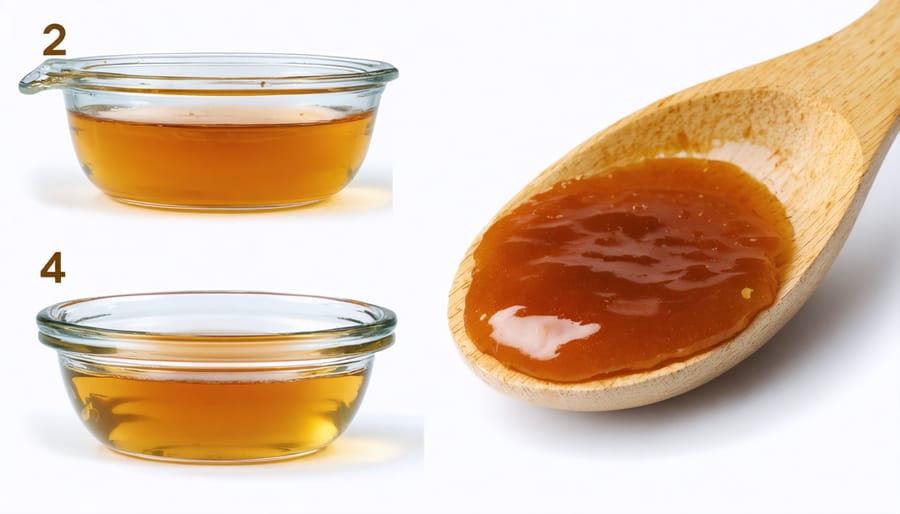
Basic Tangzhong Ratio
Getting the tangzhong ratio right is like finding that perfect recipe sweet spot – and trust me, after many floury adventures in my kitchen, I’ve got it down to a science! The basic formula is simple: use 1 part flour to 5 parts liquid (typically water or milk). For a standard loaf of bread using 3 cups of flour, you’ll want to set aside about 3 tablespoons of that flour and combine it with 1/2 cup of liquid for your tangzhong mixture.
The temperature is crucial here – you’ll want to heat this mixture while stirring constantly until it reaches 149°F (65°C), at which point you’ll notice it transform into a thick, paste-like consistency. Think of it as making a roux, but for bread! When done right, your mixture should leave ribbon-like traces when you lift your spoon.
I’ve found that using a kitchen scale for precise measurements (30g flour to 150g liquid) gives the most consistent results, but don’t worry if you’re working with measuring cups – this method is pretty forgiving. Just remember that your final tangzhong should look like thick, glossy pudding, and you’ll be on the right track!
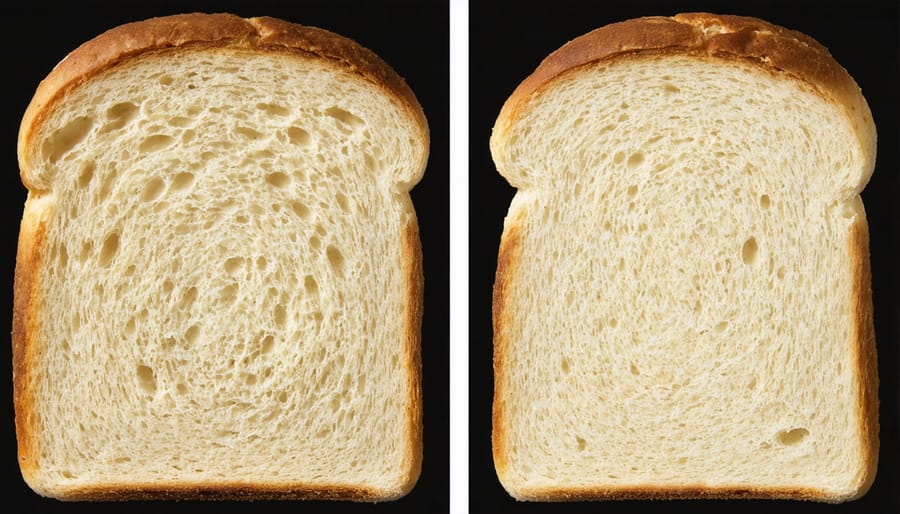
Creating Your First Japanese-Style Bread
Essential Ingredients
To create the perfect Japanese-style bread, you’ll need just a handful of quality ingredients that work together to create that signature soft, fluffy texture. Let’s start with the basics: bread flour is essential as its higher protein content helps develop those beautiful stretchy strands that give the bread its structure. While all-purpose flour can work in a pinch, bread flour truly delivers the best results.
For the tangzhong paste, you’ll need water and flour in a 5:1 ratio. This simple mixture is what gives Japanese bread its characteristic moisture and longevity. Whole milk adds richness and tenderness to the dough, though you can substitute it with plant-based alternatives like soy or oat milk for a dairy-free version.
Active dry yeast brings life to your dough – I always keep mine stored properly in the fridge to maintain its effectiveness. You’ll also need a touch of salt to enhance flavors and strengthen the gluten structure, plus a bit of sugar to feed the yeast and add subtle sweetness. A tablespoon of butter (or neutral-flavored oil for a dairy-free option) helps create that wonderfully tender crumb we all love in Japanese bread.
The Mixing Process
The magic of Japanese bread begins with a gentle, patient approach to mixing that sets it apart from traditional Western methods. As someone who’s spent countless hours perfecting these mindful cooking techniques, I can tell you that the key lies in understanding the visual and tactile cues.
Start by combining your dry ingredients in a large bowl, making a well in the center. Pour your tangzhong mixture and other wet ingredients into this well. Using your fingers or a wooden spoon, gradually incorporate the flour from the edges, moving in circular motions. This slow introduction of flour helps develop the gluten structure more effectively.
When the dough starts coming together, transfer it to a clean surface. Here’s where patience becomes crucial – instead of aggressive kneading, use a gentle folding motion. Push the dough away with your palm, then fold it back over itself. Repeat this motion rhythmically, taking care not to tear the dough.
You’ll know you’re on the right track when the dough begins to transform. Initially sticky and shaggy, it will gradually become smoother and more elastic. The ultimate test is the windowpane effect – when you can stretch a small piece of dough thin enough to see light through it without breaking, you’ve achieved the perfect texture.
This process typically takes about 15-20 minutes of gentle kneading. Remember, we’re not just mixing ingredients; we’re creating the foundation for that coveted pillowy texture that makes Japanese bread so special.
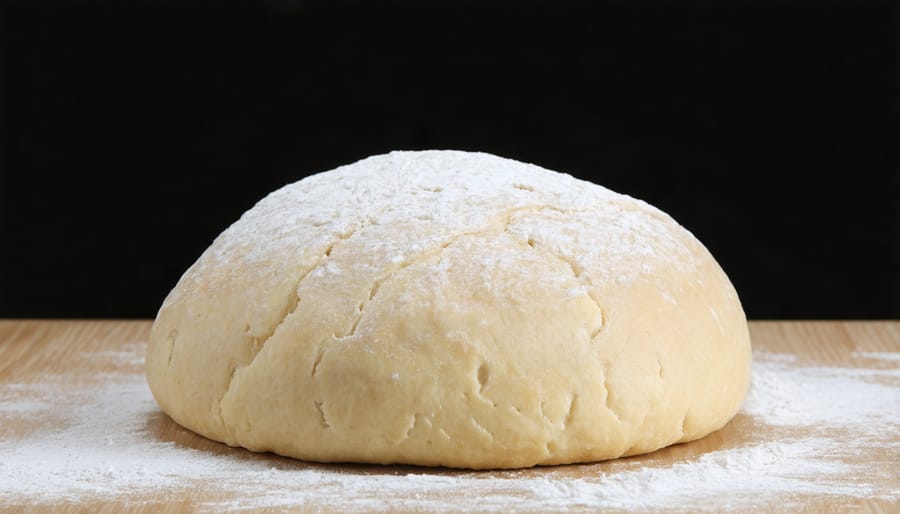
Tips for Perfect Japanese Bread Every Time
Temperature Control
When I first started baking Japanese bread, I quickly learned that perfect temperature control is absolutely crucial for achieving those pillowy-soft results we all dream about. Japanese bakers typically maintain their dough temperature between 75-78°F (24-26°C), which creates the ideal environment for yeast activity and gluten development.
Think of temperature as your bread’s comfort zone – too cold, and your dough will be sluggish and reluctant to rise; too warm, and you’ll end up with over-fermented, yeasty-tasting bread. I like to use lukewarm water (around 95°F/35°C) when mixing the dough, as it helps activate the yeast while keeping the final dough temperature just right.
Here’s a helpful tip I learned from a Japanese bakery master: check your room temperature before starting. If your kitchen runs cool, warm your mixing bowl with hot water first. During winter months, I create a cozy proofing environment by placing the dough in a turned-off oven with just the light on – it provides just enough warmth for perfect fermentation.
Storage and Freshness
One of my favorite things about Japanese bread is how it stays incredibly soft and pillowy for days after baking. To maintain that signature tenderness, proper storage is key. I always let my bread cool completely before storing – usually about 2-3 hours on a wire rack. Once cooled, wrap it tightly in plastic wrap or place it in an airtight container. The bread will stay fresh at room temperature for up to 3 days.
If you won’t finish your bread within that time, freezing is your best friend! Slice the bread before freezing, placing small pieces of parchment paper between each slice. This way, you can easily take out just what you need. When stored in a freezer bag with air removed, it’ll keep for up to 2 months. To enjoy, simply thaw at room temperature for about 30 minutes, or give it a quick 10-second zap in the microwave.
A little tip I learned from my Japanese baking adventures: never store your bread in the refrigerator. The cold temperature actually accelerates the staling process, making your perfectly soft bread turn hard and dry more quickly.
The journey of Japanese bread-making techniques into our home kitchens has been nothing short of revolutionary. What started as a simple Asian bakery method has transformed how we think about and create pillowy-soft, long-lasting bread at home. Through methods like tangzhong and yukone, we’ve discovered that achieving bakery-quality results isn’t just possible – it’s actually quite achievable for home bakers of all skill levels.
I remember when I first tried these techniques in my own kitchen. Like many of you, I was skeptical about adding an extra step to my bread-making routine. But after experiencing the incredible texture and extended freshness these methods provide, I’ve never looked back. The way these techniques have spread through our baking community, with home bakers sharing their successes and tips, truly shows their transformative impact.
What makes these Japanese methods so special is how they’ve democratized professional-quality bread making. You don’t need expensive equipment or years of experience – just a willingness to try something new and follow a few simple steps. The science behind these techniques has helped us understand our baking better, while the results have given us the confidence to experiment and grow as bakers.
As we continue to embrace these methods in our home kitchens, we’re not just making better bread – we’re participating in a beautiful fusion of Eastern and Western baking traditions that makes our baking adventures more rewarding than ever.



